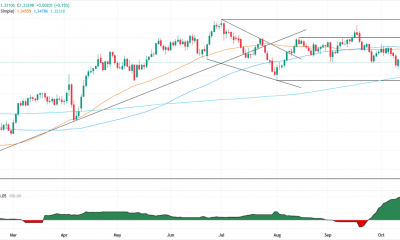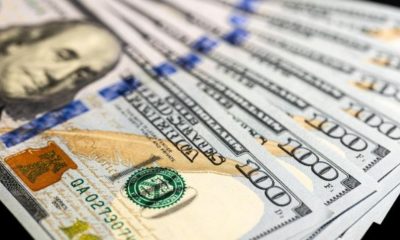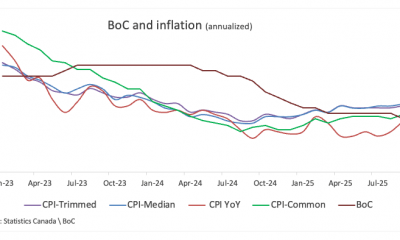

others
US Dollar retreats as recession fears emerge after Powell’s hawkish message – Crypto News
- The US Dollar loses territory against most G10 currencies.
- A lot of headlines to hit the markets in the US session with five Fed speakers an several data points.
- The US Dollar Index breaks below 102.00 and is at risk of sliding to 101.00.
The US Dollar (USD) lost substantial ground against most major currencies like the Euro or the Swiss Franc as US Fed Chairman Jerome Powell communicated to the markets that more than one rate hike will be needed to get inflation back to 2%. Investors got spooked by this as some economic datapoints have been deteriorating under the current elevated rate level from the Fed, and more hikes could tilt the US economy into a full recession. Equities sold off and the soured mood continued on Thursday in both Asia and Europe.
The second day of hearings with Fed Chairman Powell is on the agenda at around 14:00 GMT, this time facing the US Senate Banking Panel, though his message is not expected to change much from his speech on Wednesday. Before, a batch of data will come out at 12:30 GMT, including jobless claims, which last week sparked substantial US Dollar weakness as the figure came higher than expected. At 14:00 GMT, Existing Home sales – the final batch of housing numbers for this week – will come out, together with The Conference Board’s Leading Economic Index.
Daily digest: US Dollar sentiment bearish
- A slew of US data is due at 12:30 GMT. The Chicago Fed National Activity Index is forecast to come in at zero for May after a 0.07 increase in April. Jobless Claims data is set to be key as last week’s higher-than-expected increase in Initial Claims triggered substantial US Dollar weakness. Initial Claims for the week ended June 16 are expected at 260,000 against 262,000 the week earlier. Continuing Claims are anticipated to jump to 1,782K against 1,775K from last week.
- The last data points on US housing activity are due to come out at 14:00 GMT. Existing home sales are seen sliding from 4.28M to 4.25M, with the monthly number expected to decline by 0.6%, less than the 3.4% decrease registered in April. , Meanwhile, The Conference Board’s Leading Economic Index for May is also expected at 14:00 GMT. In April, the index declined 0.6% on the month. ,
- Western Texas Intermediate (WTI) Crude Oil to be moving today once the weekly US oil inventories are published at 15:00 GMT. Crude trades at $71, residing at a weekly low..
- Apart from Fed Chairman Powell, a few other Fed members are set to speak. At 08:00 GMT Fed Governor Christopher Waller delivers opening remarks at the Central Bank of Ireland conference. Fed’s Michelle Bowman delivers opening remarks around 13:55 GMT at a Fed event hosted by the Federal Reserve Bank of Cleveland. Cleveland Fed President Loretta Mester speaks on the economic and policy outlook at the Cleveland’s annual Policy summit around 14:00 GMT. To close off the speakers, Richmond Fed President Tom Barkin is to speak at the Risk Management Association in Richmond, Virginia.
- The US Treasury places a 4-week, an 8-week and a 5-year Tips bond auction.
- Equities are in the red and in sell-off mode. The China Hang Seng Index is down 2%, the German DAX falls over 1.10% and US equity futures are all three in the red. The VIX volatility index jumps back to near 14.
- The CME Group FedWatch Tool shows that markets are pricing in a 71.9% chance of a 25 basis points (bps) interest-rate hike on July 26th. The dislocation between market expectations and the Fed communication is getting bigger as Fed Chairman Powell alluded to possible two more hikes, while markets only expect one.
- The benchmark 10-year US Treasury bond yield trades at 3.75% and remains quite stable as no real flight into bonds is unfolding, rather the opposite with some selling of bonds, triggering a slightly higher yield.
US Dollar Index technical analysis: watch out for the avalanche to 101.00
The US Dollar is taking a firm step back against most currencies. Gains against the South Korean Won and the Japanese Yen are softening the blow a bit, while the risk of a further jump higher for the EUR/USD pair grows. This results in the US dollar index (DXY) breaking below 102.00, printing a new monthly low.
On the upside, the 55-day Simple Moving Average (SMA) at 102.58 is acting as resistance and could limit any recovery. Should the DXY edge up further, look for the 103.00 psychological level as the next big challenge to the upside. The 100-day SMA at 103.06 will be key to reach should the DXY want to advance even more..
On the downside, the psychological level near 102.00 has been breached and is no longer in play. Once price action starts to further move away from it, expect to see risk growing for nosedive move towards 100.82. That means a challenge to this year’s low and would imply a substantial devaluation for the Greenback to come.
How is US Dollar correlated with US stock markets?
Stock markets in the US are likely to turn bearish if the Federal Reserve goes into a tightening cycle to battle rising inflation. Higher interest rates will ramp up the cost of borrowing and weigh on business investment. In that scenario, investors are likely to refrain from taking on high-risk, high-return positions. As a result of risk aversion and tight monetary policy, the US Dollar Index (DXY) should rise while the broad S&P 500 Index declines, revealing an inverse correlation,
During times of monetary loosening via lower interest rates and quantitative easing to ramp up economic activity, investors are likely to bet on assets that are expected to deliver higher returns, such as shares of technology companies. The Nasdaq Composite is a technology-heavy index and it is expected to outperform other major equity indexes in such a period. On the other hand, the US Dollar Index should turn bearish due to the rising supply money and the weakening safe-haven demand.
-
others1 week ago
JPY soft and underperforming G10 in quiet trade – Scotiabank – Crypto News
-

 Technology7 days ago
Technology7 days agoSam Altman says OpenAI is developing a ‘legitimate AI researcher’ by 2028 that can discover new science on its own – Crypto News
-

 Blockchain1 week ago
Blockchain1 week agoXRP Price Gains Traction — Buyers Pile In Ahead Of Key Technical Breakout – Crypto News
-

 De-fi1 week ago
De-fi1 week agoNearly Half of US Retail Crypto Holders Haven’t Earned Yield: MoreMarkets – Crypto News
-

 De-fi6 days ago
De-fi6 days agoBittensor Rallies Ahead of First TAO Halving – Crypto News
-

 Technology1 week ago
Technology1 week agoMicrosoft ‘tricked users into pricier AI-linked 365 plans,’ says Australian watchdog; files lawsuit – Crypto News
-
others1 week ago
GBP/USD holds steady after UK data, US inflation fuels rate cut bets – Crypto News
-

 De-fi1 week ago
De-fi1 week agoAI Sector Rebounds as Agent Payment Systems Gain Traction – Crypto News
-

 Blockchain1 week ago
Blockchain1 week agoBig Iran Bank Goes Bankrupt, Affecting 42 Million Customers – Crypto News
-
Business1 week ago
Crypto Market Rally: BTC, ETH, SOL, DOGE Jump 3-7% as US China Trade Talks Progress – Crypto News
-

 Cryptocurrency1 week ago
Cryptocurrency1 week agoCrypto wrap: Bitcoin, Ethereum, BNB, Solana, and XRP muted after CPI report – Crypto News
-

 Cryptocurrency1 week ago
Cryptocurrency1 week agoBitcoin Accumulation Patterns Show Late-Stage Cycle Maturity, Not Definite End: CryptoQuant – Crypto News
-
Technology1 week ago
Ethereum Supercycle Strengthens as SharpLink Gaming Withdraws $78.3M in ETH – Crypto News
-

 Blockchain1 week ago
Blockchain1 week agoIBM Set to Launch Platform for Managing Digital Assets – Crypto News
-

 others1 week ago
others1 week agoGBP/USD floats around 1.3320 as softer US CPI reinforces Fed cut bets – Crypto News
-

 Blockchain1 week ago
Blockchain1 week agoEthereum Rebounds From Bull Market Support: Can It Conquer The ‘Golden Pocket’ Next? – Crypto News
-

 Cryptocurrency1 week ago
Cryptocurrency1 week agoWestern Union eyes stablecoin rails in pursuit of a ‘super app’ vision – Crypto News
-

 De-fi1 week ago
De-fi1 week agoNearly Half of US Retail Crypto Holders Haven’t Earned Yield: MoreMarkets – Crypto News
-

 Blockchain1 week ago
Blockchain1 week agoBinance Stablecoin Outflow On A Steady Rise — What This Means For The Market – Crypto News
-
others1 week ago
Indian Court Declares XRP as Property in WazirX Hack Case – Crypto News
-

 Blockchain1 week ago
Blockchain1 week agoSolana Eyes $210 Before Its Next Major Move—Uptrend Or Fakeout Ahead? – Crypto News
-

 De-fi1 week ago
De-fi1 week agoHYPE Jumps 10% as Robinhood Announces Spot Listing – Crypto News
-
others1 week ago
Platinum price recovers from setback – Commerzbank – Crypto News
-

 De-fi1 week ago
De-fi1 week agoREP Jumps 50% in a Week as Dev Gets Community Support for Augur Fork – Crypto News
-

 Technology1 week ago
Technology1 week agoMint Explainer | India’s draft AI rules and how they could affect creators, social media platforms – Crypto News
-

 Technology7 days ago
Technology7 days agoBenQ MA270U review: A 4K monitor that actually gets MacBook users right – Crypto News
-

 Blockchain1 week ago
Blockchain1 week agoEntire Startup Lifecycle to Move Onchain – Crypto News
-

 De-fi1 week ago
De-fi1 week agoNearly Half of US Retail Crypto Holders Haven’t Earned Yield: MoreMarkets – Crypto News
-

 Blockchain1 week ago
Blockchain1 week agoXRP/BTC Retests 6-Year Breakout Trendline, Analyst Calls For Decoupling – Crypto News
-

 Cryptocurrency1 week ago
Cryptocurrency1 week agoUSDJPY Forecast: The Dollar’s Winning Streak Why New Highs Could Be At Hand – Crypto News
-
others1 week ago
Is Changpeng “CZ” Zhao Returning To Binance? Probably Not – Crypto News
-

 De-fi1 week ago
De-fi1 week agoTokenized Nasdaq Futures Enter Top 10 by Volume on Hyperliquid – Crypto News
-

 Cryptocurrency1 week ago
Cryptocurrency1 week agoNEAR’s inflation reduction vote fails pass threshold, but it may still be implemented – Crypto News
-

 Technology1 week ago
Technology1 week agoSurvival instinct? New study says some leading AI models won’t let themselves be shut down – Crypto News
-

 De-fi1 week ago
De-fi1 week agoMetaMask Fuels Airdrop Buzz With Token Claim Domain Registration – Crypto News
-

 Cryptocurrency1 week ago
Cryptocurrency1 week agoGold Price Forecast 2025, 2030, 2040 & Investment Outlook – Crypto News
-

 Cryptocurrency1 week ago
Cryptocurrency1 week agoCitigroup and Coinbase partner to expand digital-asset payment capabilities – Crypto News
-

 Cryptocurrency7 days ago
Cryptocurrency7 days agoInside Bitwise’s milestone solana ETF launch – Crypto News
-

 Cryptocurrency7 days ago
Cryptocurrency7 days agoWhy Is Pi Network’s (PI) Price Up by Double Digits Today? – Crypto News
-
others7 days ago
Can ASTER Price Rebound 50% as Whale Activity and Bullish Pattern Align? – Crypto News
-

 De-fi6 days ago
De-fi6 days agoBitcoin Dips Under $110,000 After Fed Cuts Rates – Crypto News
-
Technology1 week ago
James Wynn Takes XRP Long Bet After Ripple Prime Announcement – Crypto News
-

 others1 week ago
others1 week agoGold weakens as US-China trade optimism lifts risk sentiment, focus turns to Fed – Crypto News
-
Business1 week ago
Crypto ETFs Attract $1B in Fresh Capital Ahead of Expected Fed Rate Cut This Week – Crypto News
-

 De-fi1 week ago
De-fi1 week agoCRO Jumps After Trump’s Truth Social Announces Prediction Market Partnership with Crypto.Com – Crypto News
-

 Cryptocurrency1 week ago
Cryptocurrency1 week agoKERNEL price goes vertical on Upbit listing, hits $0.23 – Crypto News
-
Technology1 week ago
Breaking: $2.6B Western Union Announces Plans for Solana-Powered Stablecoin by 2026 – Crypto News
-

 Blockchain7 days ago
Blockchain7 days agoVisa To Support Four Stablecoins on Four Blockchains – Crypto News
-

 De-fi7 days ago
De-fi7 days agoCrypto Market Edges Lower While US Stocks Hit New Highs – Crypto News
-

 others7 days ago
others7 days agoBank of Canada set to cut interest rate for second consecutive meeting – Crypto News








